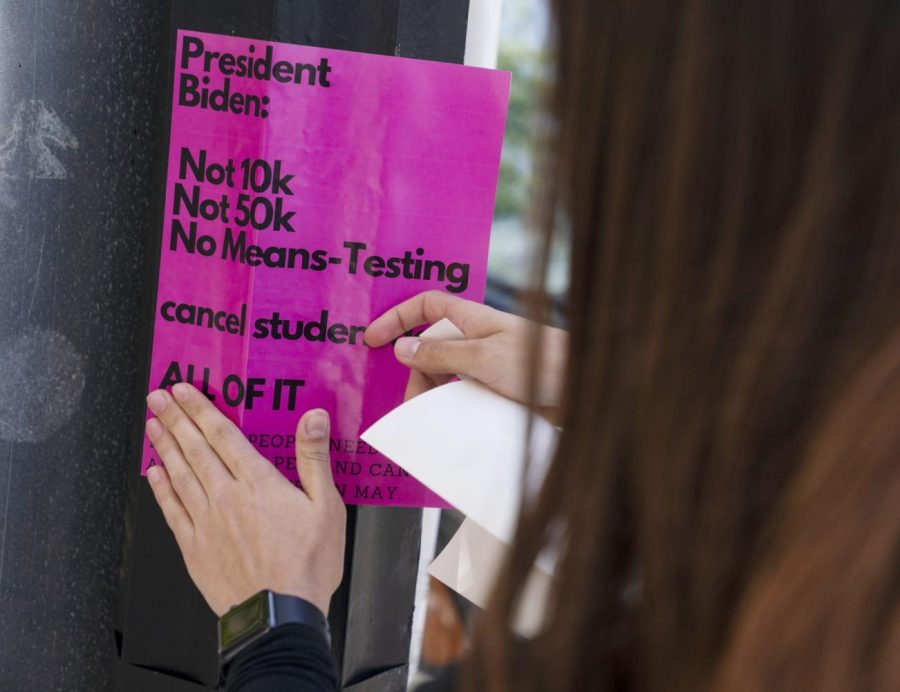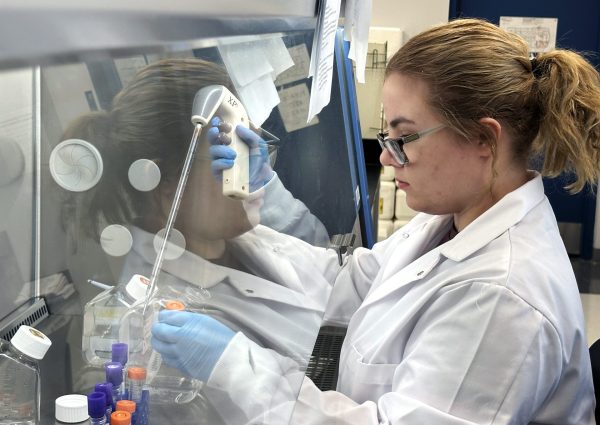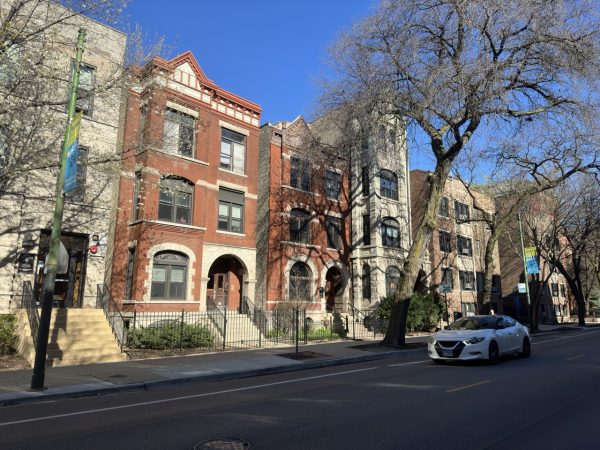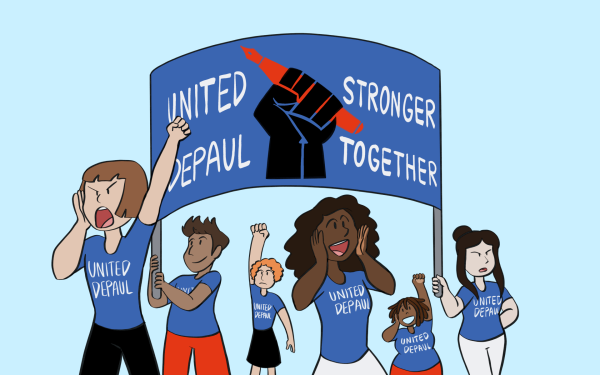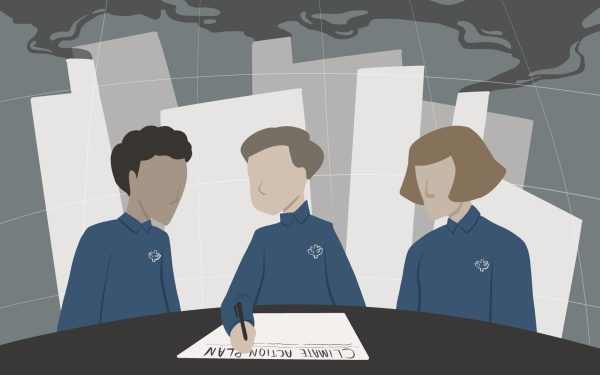Biden’s student loan forgiveness plan fails to impress DePaul students
American University student Magnolia Mead puts up posters near the White House promoting student loan debt forgiveness in Washington D.C.
Americans are in more than $1.7 trillion of student debt.
President Biden announced his plan to cancel up to $20,000 in student loan debt on Aug. 24, 2022.
According to the Federal Student Aid Office, the plan covers federal student loan holders with an annual income of less than $125,000 per year or a married couple or head of household’s income of less than $250,000 per year. Only those with a pell grant qualify for $20,000 in loan forgiveness, while the remainder qualify for $10,000.
The plan was proposed as a solution to the ever-growing student debt crisis, but many individuals have concerns surrounding the plan.
Shoshana Grubin, a DePaul student from Milwaukee, was valedictorian at her high school. She is a peace, justice and conflict studies major and has taken out a loan for $27,000 per school year and qualifies for $10,000 in debt forgiveness.
“This is a really expensive–city–and 10,000 is not going to do me justice for the differences I’m paying for living here,” Grubin said.
Grubin comes from a middle-class household, but even with her scholarship, her parents could not afford her tuition.
“I tried my hardest to get loans in my own name but there’s no possible way that I could afford tuition,” Grubin said.
Michael Miller, DePaul professor of economics, said that between 60% and 70% of those who will be impacted by Biden’s proposal will be in the middle class or higher.
“There’s almost nothing you can do for the fact that most of the people who are benefitted are people on the upper half of the income distribution,” Miller said.
However, there is no certainty that the proposal will be implemented at all. Biden has forgiven loan payments until December, but he does not have the authority to cancel the debt entirely. The debt will have to be canceled through Congress, where many members are opposed to Biden’s proposal.
Politicians across the political spectrum disagree on the fairness of Biden’s plan, as well as the numerous economic issues that could arise.
Biden introduced the Inflation Reduction Act in Aug. 2022, with the intention of reducing the negative economic impact from recent inflation.
The debt relief plan will cost between $400 billion and $800 billion, and for every dollar put into the plan, the economy will grow between 8 cents and 25 cents, according to Miller.
“This will more than completely offset everything that was gained in the Inflation Reduction Act,” Miller said.
Another economic issue that this proposal may cause is that people may begin taking out greater loans than they can afford on the assumption that the government will forgive their debt in the future.
“It’s called a moral hazard,” Miller said.
Despite the financial strain that attending college can lead to, many people feel as though they have no choice but to attend.
“I was definitely forced into college; I didn’t really ever see another option,” Grubin said.
Evan Mueller, a DePaul economics and political science student, also feels like college was the only option for him.
“I personally went to college because I didn’t see any other pathway for me,” Mueller said.
After graduating, Mueller hopes to work in a high paying position. According to Forbes, the median salary for economics majors in their early careers is $50,000 per year.
“I feel sadder for other majors that are not as lucrative right out of college,” Mueller said.
Grubin, who hopes to work in nonprofit management, does not expect to earn a high salary at all.
“I don’t think I could do nonprofit management work without that degree,” Grubin said. “Tuition’s really high and it’s not a high paying industry.”
Income can also impact someone’s ability to attend the college of their choice. Mueller had been accepted into more highly ranked universities than DePaul, but had to decline them because he had more financial aid at DePaul.
Grubin had similar difficulties despite being valedictorian at her high school.
“I’m from Milwaukee, which is a low income area, my school’s report card dramatically affected my college acceptance and got stuck with no free admissions and no free offers,” Grubin said. ”If I were a valedictorian at any other school, I could have gotten there.”
According to Miller, college tuition has risen three times faster than the cost of living in the last 25 years, and he feels that government financial help is largely to blame.
“People are willing to spend lots of money to go to these schools, and the government makes it possible by making these loans available and providing grants to people, which has allowed universities to raise their tuition faster and faster,” Miller said.
Miller’s solution to making education accessible is to make community college free.
“Within community colleges, not only do they do something like an associate’s degree, but they also teach truck driving in many cases,” Miller said. “They teach welding and bookkeeping and they go into the market, and they get almost middle class jobs.”
The majority of college students come from higher earning families, leaving many lower income people without an education.
“If you’re trying to help people of lower income, would you be better off supporting education at DePaul or Harvard, or would you be better off supporting education at the city colleges of Chicago?” Miller said.
Connect with Ruchi Nawathe: @ruchinawathe | [email protected]


